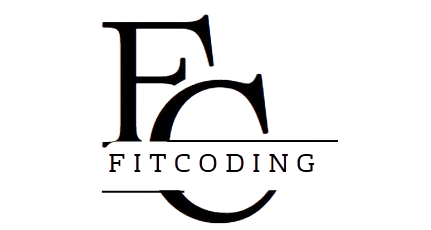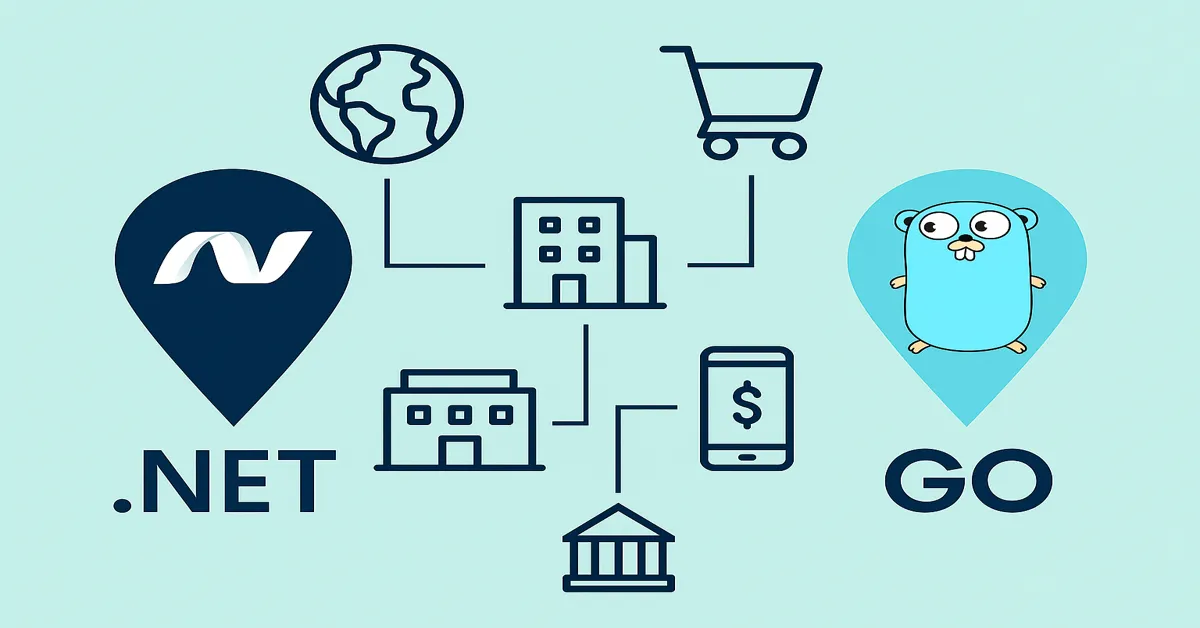In the constantly shifting terrain of modern software development, two technologies—.NET and Go (or Golang)—stand out as pillars of performance, scalability, and industrial adoption. Despite originating from very different roots—Microsoft and Google, respectively—these platforms have found relevance across sectors and use cases – .NET and Golang.
This article provides a broad and contemporary map of where .NET and Golang are used, going beyond simple definitions to reveal how these technologies anchor real-world digital infrastructure. From banking and enterprise software to cloud-native systems and developer tools, this in-depth guide explores how each is applied across domains and why they’ve emerged as leaders in their own right.
Overview: Why Map Use Cases?
Understanding where .NET and Golang are used is not just an academic exercise. It informs – .NET and Golang:
- Strategic decisions for startups and enterprises
- Technology stack planning
- Career development for developers
- Tool selection for projects
Use cases evolve alongside business needs and technological advancements. As of 2025, this landscape has matured dramatically, and clarity in selection has become essential.
Section 1: Where .NET Is Used
1. Enterprise Business Applications
.NET remains the dominant choice for internal business systems:
- Enterprise Resource Planning (ERP)
- Customer Relationship Management (CRM)
- Human Resource Management Systems (HRMS)
Why? Its tight integration with Windows, robust security model, and extensive libraries make it ideal for large, legacy-bound organizations.
2. Web Applications (ASP.NET Core)
Modern web apps built with ASP.NET Core are:
- Scalable
- Cross-platform
- High-performance with built-in dependency injection and minimal APIs
Typical examples include:
- E-commerce platforms
- Portals for education and healthcare
- B2B SaaS platforms
3. Desktop Applications
.NET remains the go-to for Windows desktop apps:
- Windows Presentation Foundation (WPF)
- Windows Forms (WinForms)
Used in:
- Banking terminals
- Retail POS systems
- Enterprise desktop utilities
4. Cloud-Native Applications
With the rise of .NET Core and now .NET 8+, .NET has reemerged in the cloud:
- Azure-native applications
- Microservices using Minimal APIs
- Scalable APIs in Kubernetes with DAPR
Companies now deploy .NET apps in Docker containers, benefiting from its performance and security.
5. Game Development
Through Unity, which relies heavily on C#/.NET, .NET plays a significant role in:
- 2D/3D mobile games
- Virtual reality (VR) applications
- Educational simulation platforms
6. IoT Systems
The .NET nanoFramework allows for embedded system development on resource-constrained devices. It’s used in:
- Smart home hubs
- Industrial automation interfaces
- Medical device software
7. Financial Services
Banks and insurance companies use .NET for:
- Transactional processing
- Risk assessment engines
- Secure data integration across systems
Its managed environment and support for complex operations make it ideal for high-stakes sectors.
8. API Backends
.NET excels in powering modern RESTful APIs:
- Used by fintech platforms
- Enterprise connectors and B2B integrations
- Secure data exchange hubs
9. Legacy System Modernization
.NET is the modern replacement for older VB6 or classic ASP systems. Many enterprises choose .NET for:
- Migration projects
- Systems refactoring
- Hybrid applications blending legacy and new code
10. Educational and Research Platforms
Academic institutions use .NET for:
- Virtual lab simulations
- Data analysis dashboards
- Administrative automation systems
Section 2: Where Go (Golang) Is Used
1. Cloud Infrastructure
Go is a native citizen of the cloud-native world. Major tools built with Go include:
- Docker
- Kubernetes
- Terraform
- Prometheus
Go powers:
- Microservices
- Cloud platforms
- High-availability backends
2. DevOps Tools and Automation
Golang is preferred for writing DevOps tooling due to:
- Static binaries (no runtime needed)
- Performance under scale
- Ease of cross-compilation
Popular tools include:
- Hugo (static site generator)
- Traefik (reverse proxy)
- etcd (distributed key-value store)
3. Microservices
Golang’s concurrency model makes it ideal for building:
- Stateless services
- Real-time data processing
- Event-driven systems
Companies like Uber, Netflix, and Dropbox use Go for their microservices because it can handle high loads with minimal memory.
4. API Servers and Gateways
Go is frequently chosen for:
- JSON API backends
- GraphQL gateways
- Proxy servers
With lightweight frameworks like Gin and Fiber, Go APIs are fast and resilient.
5. Command-Line Tools (CLIs)
Go’s ability to compile into standalone binaries makes it ideal for CLI tools:
- Developer productivity tools
- System monitors
- Data processing pipelines
Examples include:
- Kubernetes CLI (kubectl)
- GitHub CLI
6. Financial Systems
Yes, Go is increasingly being used in finance:
- High-frequency trading platforms
- Transactional APIs
- Blockchain data crawlers
Its low latency and high throughput give it a performance edge in finance.
7. Messaging and Queuing Systems
Go is a good choice for writing real-time queues:
- Message brokers
- Stream processing apps
- Log collectors
Frameworks like NATS, NSQ, and gRPC are often used.
8. Edge Computing
Its lightweight footprint makes Go a strong fit for:
- Edge data processors
- Local analytics agents
- IoT data gateways
9. Data Engineering Pipelines
Go is being adopted for building fast, resilient ETL tools:
- Log ingestion tools
- Real-time analytics streamers
- Metrics aggregation pipelines
10. Security Tools
Go’s memory safety and performance are appreciated in security:
- Network scanners
- Vulnerability scanners
- Authentication proxies
Popular examples include:
- Caddy (web server with automatic HTTPS)
- OPA (Open Policy Agent)
Comparative Matrix of Use Cases
| Domain | .NET | Go (Golang) |
|---|---|---|
| Enterprise Apps | Yes | Limited |
| Web Development | ASP.NET Core, Blazor | Gin, Fiber |
| Game Development | Unity (C#/.NET) | No major engine |
| DevOps Tools | Limited | Major area of use |
| Microservices | Supported, not native | Highly native and efficient |
| Desktop Applications | Windows Forms, WPF | Not typical |
| Cloud Infrastructure | Azure SDKs, Kubernetes integration | Docker, Kubernetes, Terraform |
| Financial Services | Deep legacy and current adoption | Growing adoption |
| Real-Time Systems | Moderate via SignalR and other libraries | Strong via goroutines and channels |
| CLI Tooling | Not typical | Preferred |
| Security Tools | Enterprise identity systems | Lightweight proxies, scanners |
| Edge/IoT Devices | .NET nanoFramework | Gateway agents, edge processors |
Choosing the Right Tool for the Right Job
The core takeaway from this extensive list is that neither .NET nor Go is universally superior. Each brings unique strengths:
- Choose .NET for enterprise integration, robust GUIs, and applications requiring a mature framework.
- Choose Go for lean services, distributed systems, and high-concurrency architectures.
The real power lies in understanding the use case context:
- Who are your users?
- What are the deployment environments?
- What’s your team’s experience and preferred tooling?
- What kind of performance constraints exist?
Integration Across the Stack
In reality, many modern systems use both .NET and Go:
- .NET may power the front-end API or dashboard.
- Go runs the background services or container orchestration layer.
Understanding this interoperability adds to developer versatility and strategic system design.
Looking Ahead: Evolving Use Cases
As .NET and Go continue to evolve, new use cases are emerging:
- .NET MAUI for multi-platform apps
- Go generics for more expressive APIs
- WebAssembly (WASM) support for both
- Serverless platforms embracing both stacks
Organizations now blend the two stacks to balance complexity, performance, and developer productivity.
Conclusion
Whether you’re designing a system from scratch or evolving a legacy platform, understanding where .NET and Go are used helps you make smarter choices. .NET continues to dominate where structure, maturity, and deep integration matter. Go, meanwhile, pushes boundaries in cloud-native innovation and developer agility.
Both languages offer paths to elegant, performant, and maintainable software—provided they’re matched thoughtfully to the challenges they’re built to solve.
The modern developer needn’t pick sides. Instead, they must pick contexts. And in that light, both .NET and Golang are indispensable tools in today’s increasingly modular and service-oriented software landscape.
Read:
Step 1 to Learn .NET & Golang Programming: A Modern Beginner’s Blueprint
Step 2 to Learn .NET and Golang Coding: Deepening Practical Knowledge
The Efficiency of .NET and Go (Golang) Coding: A Contemporary Technical Analysis
Difference Between .NET & Golang Programming Languages
FAQs
1. What industries commonly use .NET for their software systems?
Answer: .NET is widely used in enterprise software, finance, healthcare, education, and government sectors—especially where robust, scalable, and secure systems are required.
2. Where is Golang most commonly used in modern software development?
Answer: Golang is prominent in cloud infrastructure, DevOps tools, microservices, command-line utilities, and high-concurrency systems like APIs and real-time data processors.
3. Can .NET and Go be used together in the same system?
Answer: Yes, many systems use .NET for frontend APIs or enterprise integrations and Go for background services, containerization, or DevOps tooling—leveraging the strengths of both.
4. Is .NET suitable for cloud-native development?
Answer: Absolutely. With .NET Core and .NET 8+, the platform is fully cross-platform, supports Docker and Kubernetes, and integrates seamlessly with cloud services like Azure.
5. Why is Go preferred for infrastructure and DevOps tools?
Answer: Go compiles to fast, static binaries, has a minimal runtime footprint, and handles concurrency elegantly—ideal for writing scalable and efficient infrastructure tools.











